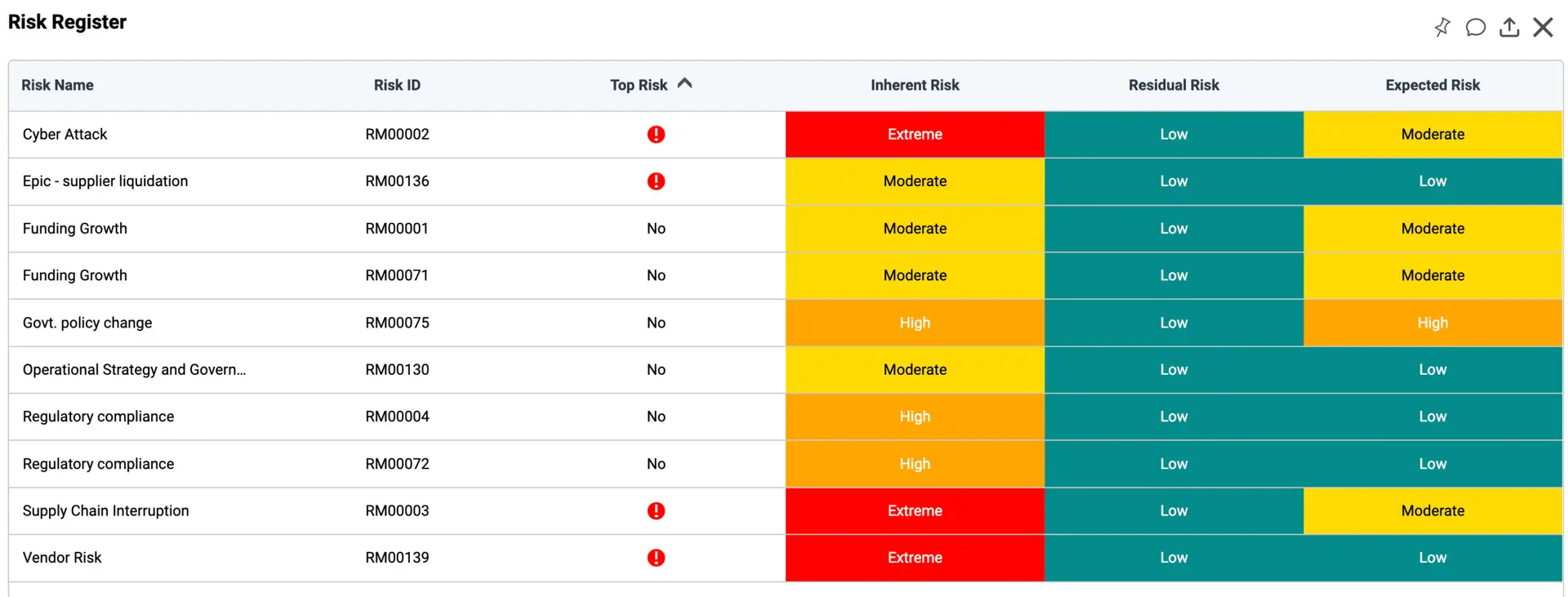SOLUTION
Enterprise Risk Management (ERM)

Holistic Insight
Identify and assess risks across your entire organization in real time.
Centralize risk data to gain a clear, unified view.
Automate risk scoring and prioritization with configurable rules.
Generate reports and dashboards for confident decision making.
“Our business is global and changes daily. The ability to easily move plans and folders within CLDigital with no coding saves us a ton of time every year.”
Chief Information Officer
- Large Insurance Company (UK)
“CLDigital gave us real-time visibility and control, bringing risk and compliance into one coherent view.”
Chief Risk Officer
- Global Financial Institution (UK)
“We replaced dozens of spreadsheets and legacy systems with one intuitive dashboard with no code required.”
Enterprise Risk Manager
- U.S. Healthcare Organization
Strategic Alignment
Align risk mitigation efforts with business objectives.
Monitor key risk indicators and set proactive alerts.
Quantify risks using impact and likelihood metrics for objective analysis.

BENEFITS
Complete Risk Visibility
Strategic Risk Insights
Prioritized Investments
Enhance Resilience
FAQ
Solution FAQs
What is Enterprise Risk Management?
What are the key functionalities of ERM?
What are the benefits of ERM?
What are the challenges of ERM?
GET STARTED
Let's Connect
Discover how our platform can help you achieve better outcomes and you prepare for what’s next in risk and resilience.